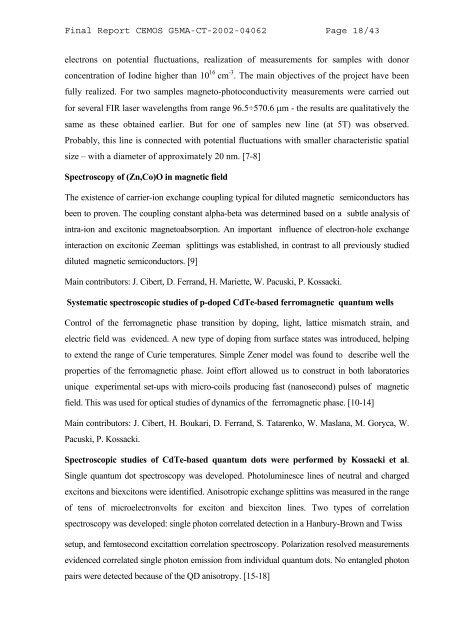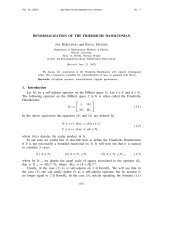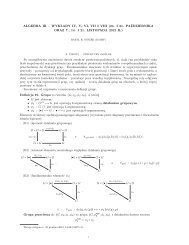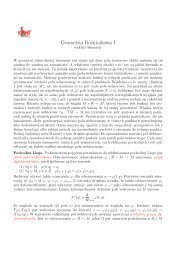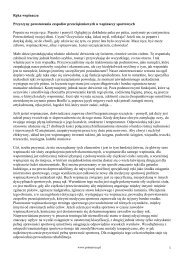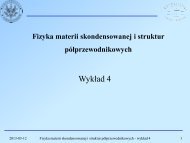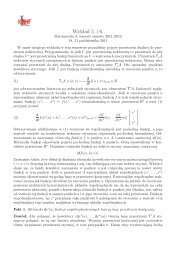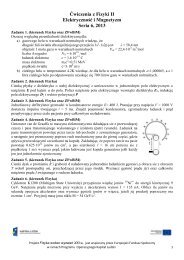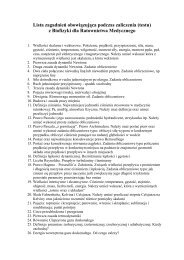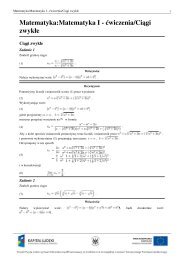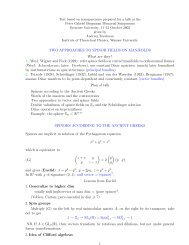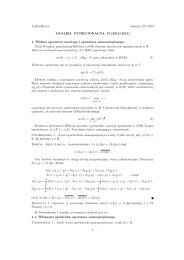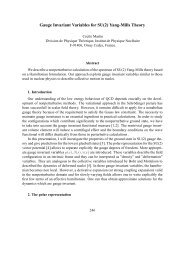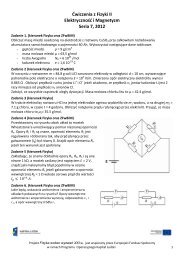Final Report - Faculty of Physics
Final Report - Faculty of Physics
Final Report - Faculty of Physics
You also want an ePaper? Increase the reach of your titles
YUMPU automatically turns print PDFs into web optimized ePapers that Google loves.
<strong>Final</strong> <strong>Report</strong> CEMOS G5MA-CT-2002-04062 Page 18/43<br />
electrons on potential fluctuations, realization <strong>of</strong> measurements for samples with donor<br />
concentration <strong>of</strong> Iodine higher than 10 16 cm -3 . The main objectives <strong>of</strong> the project have been<br />
fully realized. For two samples magneto-photoconductivity measurements were carried out<br />
for several FIR laser wavelengths from range 96.5÷570.6 μm - the results are qualitatively the<br />
same as these obtained earlier. But for one <strong>of</strong> samples new line (at 5T) was observed.<br />
Probably, this line is connected with potential fluctuations with smaller characteristic spatial<br />
size – with a diameter <strong>of</strong> approximately 20 nm. [7-8]<br />
Spectroscopy <strong>of</strong> (Zn,Co)O in magnetic field<br />
The existence <strong>of</strong> carrier-ion exchange coupling typical for diluted magnetic semiconductors has<br />
been to proven. The coupling constant alpha-beta was determined based on a subtle analysis <strong>of</strong><br />
intra-ion and excitonic magnetoabsorption. An important influence <strong>of</strong> electron-hole exchange<br />
interaction on excitonic Zeeman splittings was established, in contrast to all previously studied<br />
diluted magnetic semiconductors. [9]<br />
Main contributors: J. Cibert, D. Ferrand, H. Mariette, W. Pacuski, P. Kossacki.<br />
Systematic spectroscopic studies <strong>of</strong> p-doped CdTe-based ferromagnetic quantum wells<br />
Control <strong>of</strong> the ferromagnetic phase transition by doping, light, lattice mismatch strain, and<br />
electric field was evidenced. A new type <strong>of</strong> doping from surface states was introduced, helping<br />
to extend the range <strong>of</strong> Curie temperatures. Simple Zener model was found to describe well the<br />
properties <strong>of</strong> the ferromagnetic phase. Joint effort allowed us to construct in both laboratories<br />
unique experimental set-ups with micro-coils producing fast (nanosecond) pulses <strong>of</strong> magnetic<br />
field. This was used for optical studies <strong>of</strong> dynamics <strong>of</strong> the ferromagnetic phase. [10-14]<br />
Main contributors: J. Cibert, H. Boukari, D. Ferrand, S. Tatarenko, W. Maslana, M. Goryca, W.<br />
Pacuski, P. Kossacki.<br />
Spectroscopic studies <strong>of</strong> CdTe-based quantum dots were performed by Kossacki et al.<br />
Single quantum dot spectroscopy was developed. Photoluminesce lines <strong>of</strong> neutral and charged<br />
excitons and biexcitons were identified. Anisotropic exchange splittins was measured in the range<br />
<strong>of</strong> tens <strong>of</strong> microelectronvolts for exciton and biexciton lines. Two types <strong>of</strong> correlation<br />
spectroscopy was developed: single photon correlated detection in a Hanbury-Brown and Twiss<br />
setup, and femtosecond excitattion correlation spectroscopy. Polarization resolved measurements<br />
evidenced correlated single photon emission from individual quantum dots. No entangled photon<br />
pairs were detected because <strong>of</strong> the QD anisotropy. [15-18]


